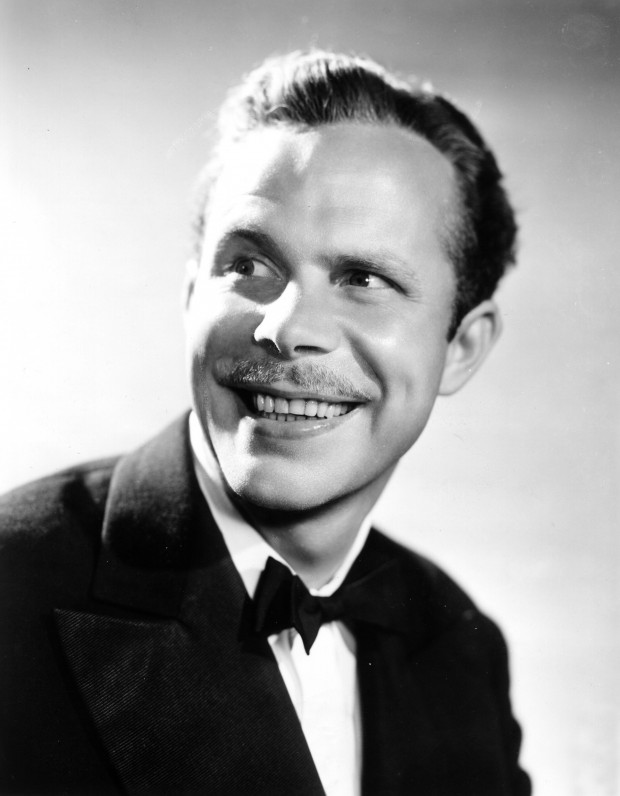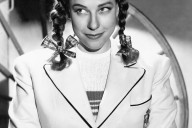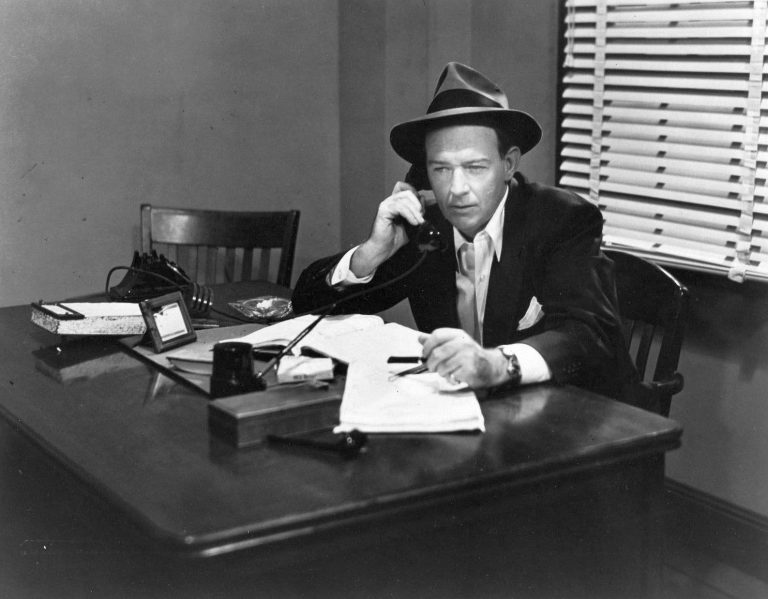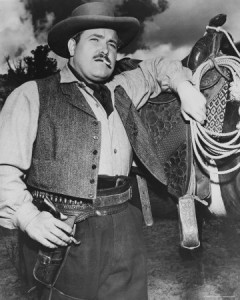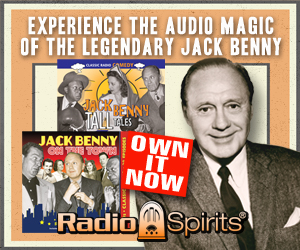By Elizabeth McLeod
Deep in the memories of a certain generation there lurks a presence — a sinister voice that manages to be both gruesome and hilarious. This unsettling combination, which contributed to many a sleepless night for those who encountered it as children, has gone on to become a popular-culture institution. Even today, in the age of personalized media and rampaging technology, the Horror Host is fondly and reverently remembered. From the fifties through the eighties, a legion of local television announcers, news reporters, and weathermen were pressed into duty late at night or on Saturday afternoons – rigged out in fright wigs and bloody lab coats, pointy fangs and Dracula capes, and sent out in front of the camera to introduce gritty old 16mm monster movies. Everyone remembers their local horror host, their Uncle Mouldy or Auntie Gruesome or Doctor Fang, but not everyone remembers the origin of these cathode-ray goblins. Not everyone remembers a horribly squeaking door keening out of the radio speaker, followed by a greeting dripping with menace: “Good evening Friends of the Inner Sanctum…”
And not everyone remembers the man responsible for it all, a hard-charging bundle of energy named Himan Brown.
Hi Brown lived for radio. He came of age just as the medium was becoming a vital part of the American scene, and he spent his entire adult life believing in radio as the definitive method of storytelling. Even after nearly all of his contemporaries had moved on, assimilated by television or movies or the stage, Hi Brown continued to believe in radio. He even brought it back to life at a time when just about everyone thought he was out of his mind to try. And, he owed it all to that squeaking door.
Some innovators entered radio through the side door. Some climbed up the fire escape and snuck in a window. Some drifted in to get out of the figurative rain. But, not Hi Brown. Hi Brown walked right up to the front door, shoved the guard aside and pushed his way in. As a teenager, he worked out a deal with cartoonist Milt Gross to bring Gross’s hilarious Yiddish-dialect characters to the air. While this feature didn’t last long, it did catch the attention of another innovator with something to prove. Gertrude Berg was just then trying to sell NBC on her idea for a serial telling the story of a working-class Jewish family in the Bronx — and this voice telling funny stories on WEAF sounded like just the voice she wanted to play the family patriarch, Jake Goldberg. Although Berg was nonplussed to discover that voice was coming from the throat of an adolescent boy, they nevertheless formed a partnership and The Rise of the Goldbergs began a long and successful run.
Hi Brown didn’t last long, though. There was to be only one boss on The Goldbergs, and that was to be Gertrude Berg. Hi Brown became the first of many people to discover that truth. After a few weeks, he found himself back on the street, hustling for another radio job. He spent the next decade building himself up, creating a raft of program ideas, hooking up for a stretch with soap-opera impresarios Frank and Anne Hummert, and finally made his way back to the big time with the romantic comedy-drama anthology Grand Central Station. With a successful long-term network series on his resume, Brown was finally ready to have some fun.
Horror wasn’t new to radio. It had had a presence on the air since the early 1930s, ranging from the pulpy mayhem of The Witch’s Tale to the highbrow terror promoted by Wyllis Cooper and Arch Oboler on Lights Out. But, the one thing these early programs had in common is that they took themselves seriously. They were, pardon the expression, dead earnest about the horrors they presented. Hi Brown decided that radio had had enough of that — and proposed to wring laughs out of the format, blended right in with the gore.
His show, originally called The Squeaking Door, featured stage actor Raymond Edward Johnson as the master of ceremonies — a caustic ghoul with a voice like a rusty razor, who would introduce each week’s tale with just the right note of cheerful sociopathy to get the proceedings off on a “light” note (if your idea of “light” included jokes about decapitation, amputation, strangulation, or leisurely baths in a steaming vat of acid). There was nothing on the air quite like The Squeaking Door in 1941, and the makers of Carter’s Little Liver Pills loved the whole package…except for the title. Just at that time, the publishing firm of Simon and Schuster was having moderate success with a series of grade-B mystery novels under the umbrella title Inner Sanctum Mysteries. With his well-honed talent for wheeling and dealing, Brown immediately worked out an arrangement with the publishing firm to use their title in exchange for free plugs on the air, and Inner Sanctum Mysteries was ready for radio.
And that, essentially, was it. The format remained the same throughout the program’s long and successful run: each week, organist Lew White pounded out a low, rumbling progression punctuated by a sudden terrifying sting — the aural equivalent of whisking the sheet off a mouldering corpse. Then came the squeak — a high, fingernails-on-the-blackboard skeen at first, evolving eventually into a deep, full-bodied groan suitable to the foulest, dankest catacomb ever to haunt a twelve-year-old’s imagination. And then came Raymond, Your Host with his oily, smirking introduction, sounding for all the world like an insurance salesman with a sideline in axe murder. Johnson milked these introductions for all they were worth, and Brown’s scriptwriters played along, each week making Raymond’s remarks riper and more outrageous. The scripts themselves followed suit — throwing their hapless heroes and heroines into the most outlandish circumstances possible, flinging up the most exaggerated supernatural menaces possible, before whipping it all to a “it was all a fake, it was all a frame-up, and here’s how it was done” conclusion. In the world of Inner Sanctum Mysteries, those vampires, werewolves, ghosts, and necromancers were usually, under the shroud, just garden-variety con men, cheating husbands or revenge-seeking wives. But, just for a minute, you believed it.
Raymond Edward Johnson spent four years as Your Host — four gore-splattered, mold-encrusted years of increasingly outlandish tales. But military service finally took him, and after a brief trifling with lesser replacements, Brown hit the jackpot with another Broadway character actor, the mellow-voiced Paul McGrath — who would give Your Host his definitive personality. Where Johnson always gave the impression that he might just climb out of the speaker and slit your throat if you didn’t laugh at his jokes, McGrath’s host didn’t care if you laughed at his jokes or not. Delivering his lines in a rich, fruity baritone that sounded for all the world like Digger O’Dell gone fully to the dark side, McGrath’s Host was having too much fun to care what anyone thought — he created his own world of grisly mirth, and if you didn’t care to join him, well, you were just like Mary the Lipton Tea Lady, just another boring old party-pooper.
The Lipton commercials of Inner Sanctum’s prime mid-forties era were among the most hilarious the medium ever produced. Here, Hi Brown managed to give the back of his hand to the hard-selling, oozingly-genial sales pitches that characterized mainstream radio…but, did so in such a way that the sponsor couldn’t possibly complain. Each week, actress Mary Bennett cooed out her pitch for Lipton products, in her prim middle-class-lady sort of way. And each week, McGrath mocked and jeered at her message in the most gruesome way possible. And then — far from screaming and recoiling in terror — Mary Bennett merely chided the Host for his poor manners, the way a respectable housewife might chide her husband for smoking at the supper table. Listeners could be forgiven for imagining the two as radio’s most dysfunctional married couple, a graveyard Dorothy and Dick — but Lipton certainly seemed satisfied, and so was Himan Brown.
Inner Sanctum Mysteries continued on through the late forties with little change in style. Bromo Seltzer replaced Lipton as sponsor in 1946, and while the Sonovox “talking train” commericals are burned into the collective memory of every American child born just before the War, the show lost something when Mary the Tea Lady went away. No doubt Your Host pined for his lost love by burying himself in his work, piling on more gore and violence than ever before until, finally, there just weren’t any more victims left.
When Inner Sanctum left the air, it wasn’t the end for Himan Brown. He continued to push new ideas until there wasn’t any radio drama left — and then he spent the next decade trying to bring it back. He succeeded in 1974 with The CBS Radio Mystery Theatre, complete with the same squeaking door. But, there was a new master of ceremonies, the professorial E. G. Marshall, whose greatest eccentricity was his fastidious pronunciation of “Anhoyser Busch.” Listeners were glad to have radio drama back — and were glad Hi Brown was still alive and well and making it happen, with the same verve and love for the aural medium he’d always shown. And, deep down, no doubt a few of those listeners with long memories were also hoping that somewhere, in a dark and forgotten crypt in an overgrown cemetery, Your Host and his long-suffering tea-sipping wife were happy together at last.
Copyright 2013 Elizabeth McLeod and RSPT LLC. All rights reserved.

